From frescoes of dragons, to long-worshipped statues of the Virgin Mary, Aosta’s ancient churches are both beautiful and fascinating.
For further information click here.
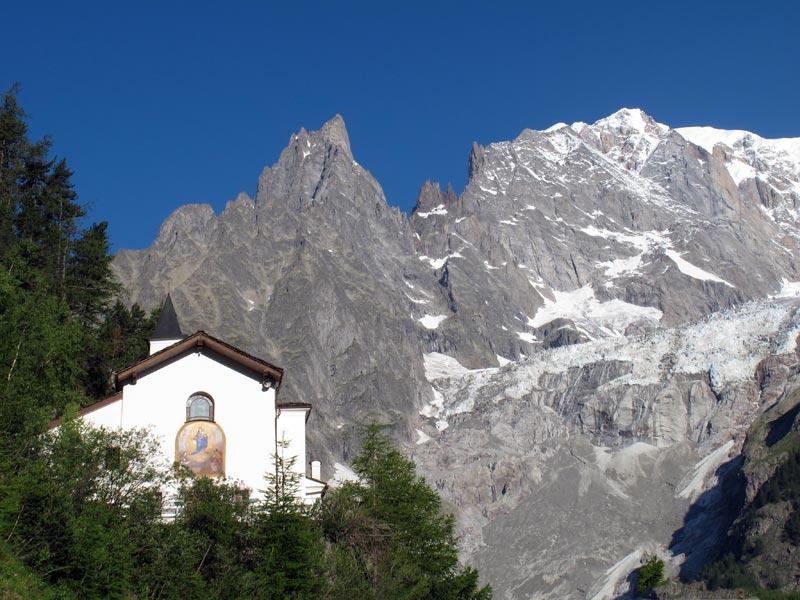
NOTRE-DAME DE LA GUÉRISON
This beautiful church is located on the road to Val Veny, with its Brenva glacier backdrop. The sanctuary was built in 1792 on a stone mass called a “berrier”, meaning rock or stone. In 1816, the small sanctuary was destroyed by the relentless advancement of the Brenva glacier – only the statue of the Madonna remained, an event that was considered miraculous by the parishioners. The current sanctuary was rebuilt in 1867 and consecrated the following year. The supernatural fame of the Virgin Mary has made this sanctuary a place of pilgrimage, where believers covered the inside walls with crutches, votive offerings and gifts.
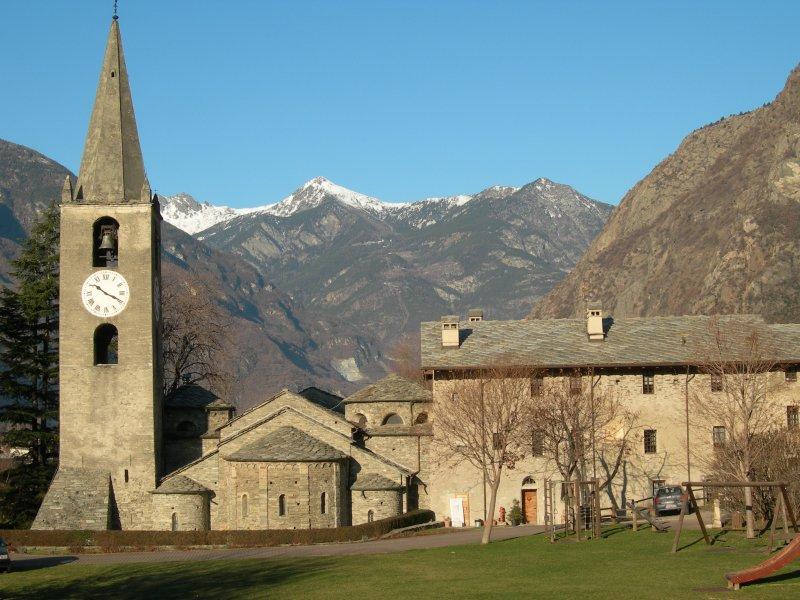
ARNAD CHURCH
The Church of San Martino is located in the chief town of Arnad, and has a quadrilateral layout with three naves that preserve a roof made of Gothic cross vaults. The pillars support large arches that rest on capitals, while the facade has a central tuff portal from the 15th century, decorated with a keel-shaped arch representing two intertwined tree trunks with an overhead rose window. Late Gothic frescoes including St. George fighting a dragon, the feast of Herod, the crucifixion, and the beheading of John the Baptist can be seen here, and the parish museum preserves some interesting sacred objects, including a crucifix from the 13th century.

CHURCH OF SANT’ORSO AND CLOISTER
The Church of Saints Peter and Orso is an isolated and majestic bell-tower, a marvellous cloister and a Renaissance priory. In ancient times the building formed part of a vast extra-urban necropolis where an Early Christian complex was erected at the beginning of the 5th century. The current church originated in the 11th century, its crypt and Ottonian frescoes surviving to this day. Built with 37 marble columns, the cloister was completed in 1133, and is a great example of Romanesque sculpture. The istoriato capitals depict scenes from the bible, and episodes from the lift of St. Orso.

CATHEDRAL OF SANTA MARIA ASSUNTA
This cathedral was originally a huge building, substantially unchanged up to the Romanesque era, when the church formed its current appearance. The main baptistery dates back to the 4th century, while the frescoes on the church ceiling are Romanesque. Over the centuries the church was renovated quite radically. A domineering wooden crucifix was added in in the 14th century, and two floor mosaics from the 12th and 14th centuries are still in evidence, while the high altar is Baroque in style. In 1985 the Treasury Museum was opened offering a significant panorama of local art. The facade of the cathedral is comprised of an elegant 16th century atrium decorated with statues and frescoes depicting the life of the Virgin Mary, and a Neo-Classic front section from 1848.
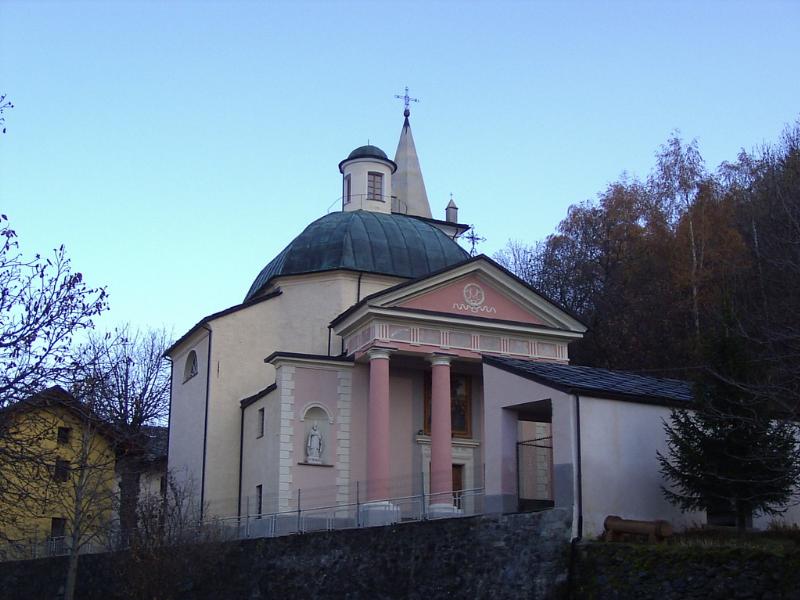
PLOUT SANCTUARY
There was once a huge rock between the villages of Denchasaz and Plout, with a cave inside that hosted a small statue of the Virgin Mary. The inhabitants of the village and anyone travelling in the area would kneel here and ask the Virgin Mary for her protection and help. Then, in 1640, it is said that a local builder fell from a roof he was working on and decided to erect an oratory in honour of the Virgin Mary. When he got better he kept his promise and built a church. In 1850 the Bishop of Aosta decided the church wasn’t big enough to host such large crowds of pilgrims, and ordered the construction of a new and more spacious sanctuary in the form of a Greek cross with a beautiful dome in the middle.

MACHABY SANCTUARY
Machaby Sanctuary can be found among the chestnut forests in the Vallone di Machaby, not far from the centre of Arnad. Of 14th century origin, the sanctuary was entirely rebuilt in 1687. As well as its numerous votive offerings, it also contains a 17th century statue of the Virgin Mary, defined by the scholar Bruno Orlandoni as “one of the best works of art in Valle d’Aosta, Baroque sculpture”. Legend has it that the sanctuary was erected where a statue of the Virgin Mary was found. Initially moved to a field, it was later found in its original place in the alcove on the main altar, where you can still see it today.
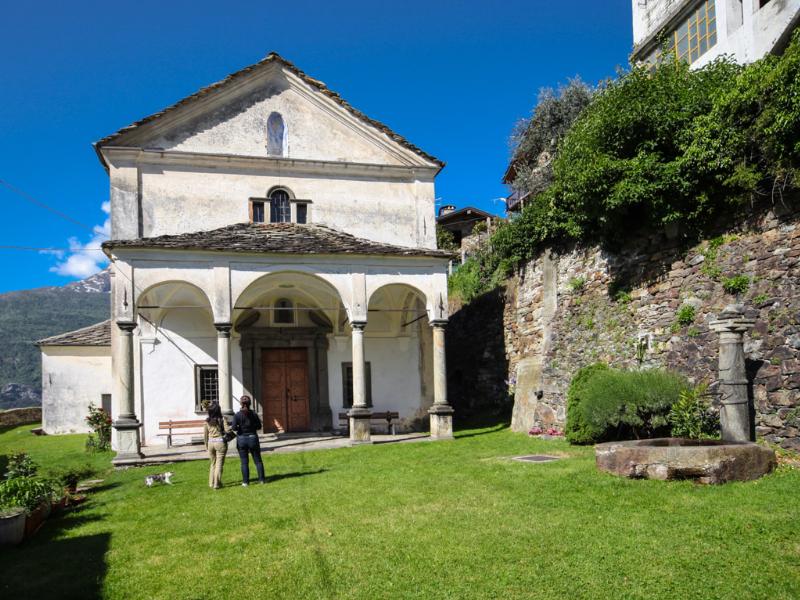
MADONNA DELLA GUARDIA SANCTUARY
Dating back to the 13th century, Madonna della Guardia Sanctuary was extended into its current state between 1715 and 1718. The facade is very elegant, with a portico supported by four columns. The interior, frescoed in the 19th century by the Avondo brothers, was covered with ribbed vaults and small, votive squares and displays of popular faith. There are three wooden altars from the 18th century and the statue of the miraculous Virgin Mary seated with Child, while the inner windowsill of the façade has an oval stone used as a “chaplain”, with the inscription HIS, and the Vallaise shield. A square in front of the church hosts a beautiful fountain, and behind the church there’s a bell-tower and a house for pilgrims, with an elegant portico and views out onto the flatland.
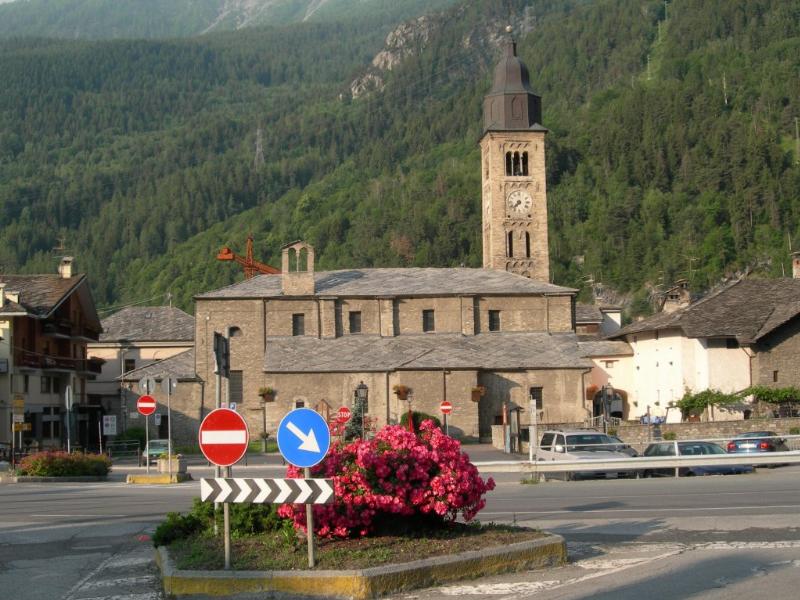
MORGEX CHURCH
This medieval church is dedicated to Santa Maria Assunta, and home to an imposing baroque altar, 16th century frescoes and an interesting museum of sacred art. The structure was readjusted on several occasions, until it was given its current appearance in 1705, when Monsignor d‘Arvillars consecrated the building after significant renovation. The interior decor is defined by the Savoyard Girollet, while the remainder is the work of the painter Lancia, who was active during the first half of the 20th century. All that remains of its ancient decoration is a Last Supper depiction, and some frescos of the 15th century chapel. Dating back to the 18th century, the main altar is rich with frieze and gilding, although the central painting of the Assumption of Mary was replaced with a painting by Lancia after a fire destroyed the original in 1931.
